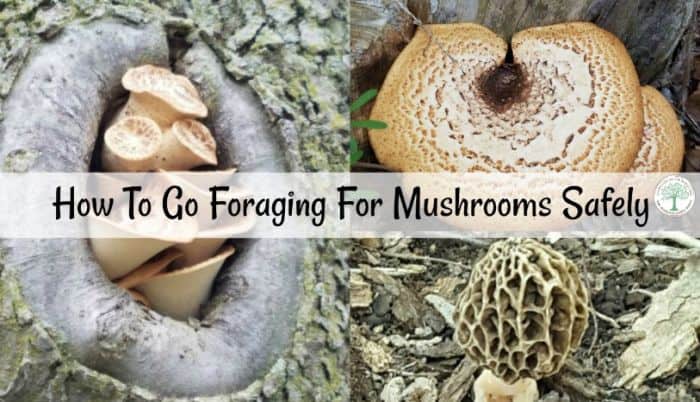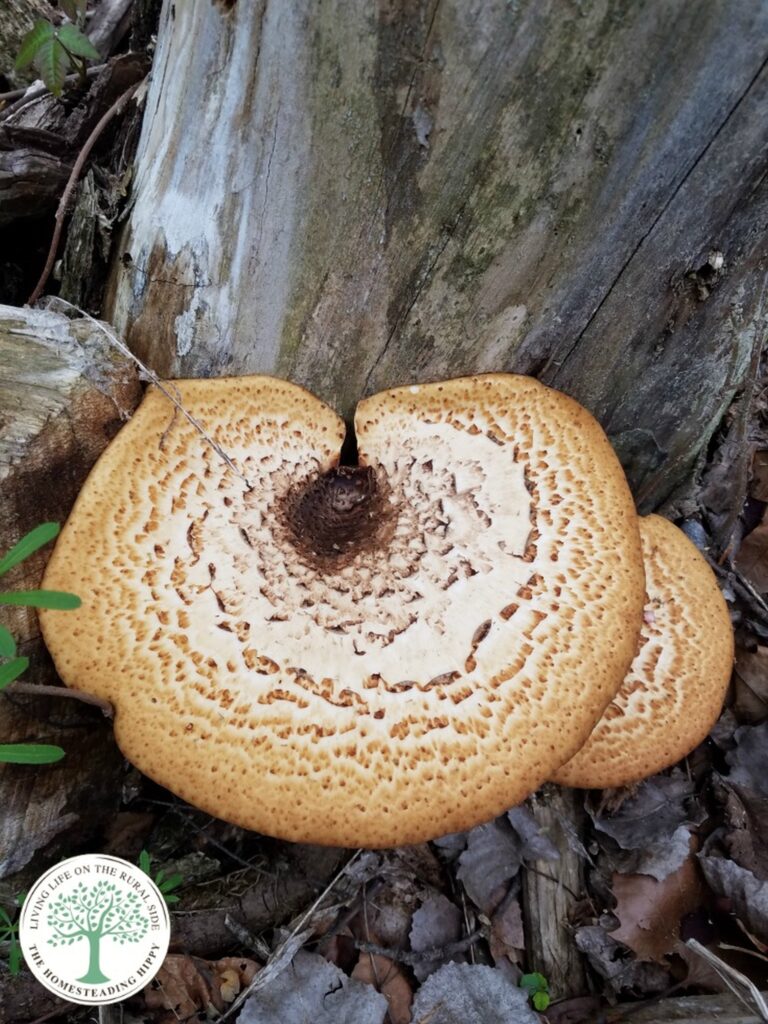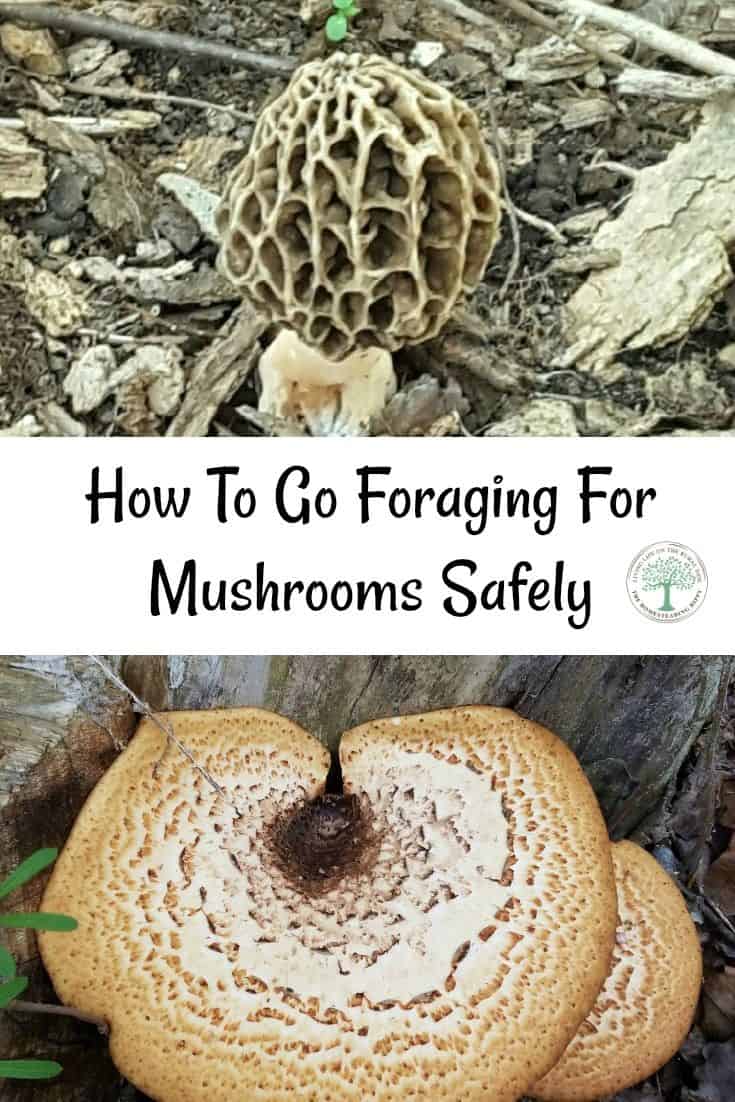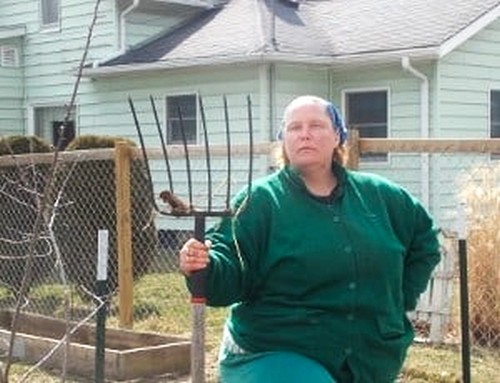As the weather turns from bitter cold to warm, wet Spring, there will be lots of growth in fields, forests and your backyard. Many will be delicious edibles, mushrooms to go foraging for and just waiting to be enjoyed.
I love foraging for morels and pheasant back mushrooms especially. They are a family favorite with light flavor and great texture.

Tips to Forage for Mushrooms
So, how do you begin foraging for mushrooms SAFELY?
First, keep in mind that safety needs to be a top priority when foraging for mushrooms. It’s easy to mis-identify a species and find one that isn’t edible.
As matter of fact, it’s thought that there are over 1,600 identified species of fungi and even more that are NOT currently identified.
To make sure you are finding a truly edible mushroom, it’s best to make sure you have a full color field guide or a mushroom foraging book with you or someone experienced in foraging for mushrooms.
Some things to remember when starting out foraging for mushrooms:
- Identity is everything! If you can’t positively id the mushroom, take a picture of the cap, gills, and stems and come back later to retrieve it, if necessary.
- To help keep the spores spread, use a mesh bag when collecting. If that’s not possible, try collecting your specimens in a paper bag.
- You can collect your specimens by either plucking directly from the spot, or by using a field knife. Either way is perfectly fine.
- Keep track of where you find your mushrooms by writing it down in a notebook. This will help you check back it that area for later specimens.
- Many experienced mushroom foragers will NOT reveal where they find theirs. BUT, they will often be happy to help you in the areas you want to search for a more positive identification.
- Learning how to identify the cap, stem, and gills is a great way to start. When those things are identified, and you still aren’t sure, taking a spore print will aid in positive identification.
- **NEVER EAT A MUSHROOM YOU CAN’T POSITIVELY IDENTIFY**
Checking with your field guide is a MUST when you are foraging for mushrooms. There will be some species that you will need to cut open to check the insides as well to make sure they are safe to consume.
If you still can’t decide, a good determining factor will be in the color of the spore print.
How To Make A Spore Print
To take a mushroom home for a spore print, you will need a mature mushroom. Young mushrooms and those with something covering their gills are not likely to drop spores for a print. To get your mushroom spore print:
- After collection, carefully remove the stem and set the cap, face down onto a piece of paper. Try using both black and white papers if you can to see darker and lighter spore prints. If possible, use a glass slide for best results.
- Cover the cap with a glass bowl or cup to keep the any air movement from blowing spores away.
- Allow to stay in place for at least 4-6 hours, or better yet, leave overnight. Some species can take longer to leave a print.
- Carefully remove the cap from the paper or glass. You want to be sure to not disturb the print, to see the pattern of the gill’s print and color.
The COLOR of the print is what is used to compare with field guides and keys. Some mycologists have tried to standardize the color interpretations, but have had little success.
Some color differences range from subtle, like white to creamy and are more difficult to identify. Others, such as pink or brown prints are easily used to help identify the mushroom.
For mushrooms like morels and false morels, and those belonging to Ascomycetes, the spore print may also have prints around the mushroom as well as underneath it. This is due to the species’ tiny spore jets that forcibly eject the spores.
With practice, you’ll be able to see, collect and even learn how to save the beautiful spore prints from your mushrooms.

As you learn to forage for mushrooms, you’ll discover a wide variety of edible, delicious species.
Just make sure to use safety and caution and remember the golden rule, “When in doubt, DON’T”.
Be sure to pin this for later when you are heading out to go foraging for mushrooms!


Heather’s homesteading journey started in 2006, with baby steps: first, she got a few raised beds, some chickens, and rabbits. Over the years, she amassed a wealth of homesteading knowledge, knowledge that you can find in the articles of this blog.
Learn more about Heather and the rest of the writers on this page.

While I appreciate this post and all the effort you went to I will never forage for wild mushrooms. I had a dog die from eating a mushroom in the wild. It was growing in a cow patty and it was the worst weekend ever. She lasted 4 months before I had to put her down. There is nothing to ever take that fear away for us.
I am so sorry about your loss, that is so heartbreaking!!
Thank you.